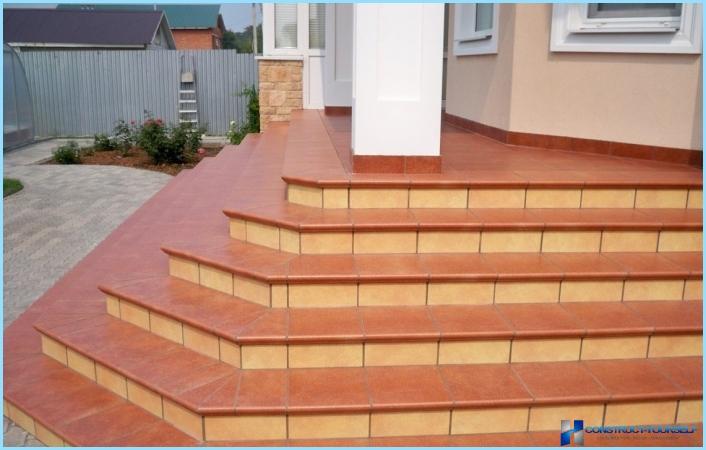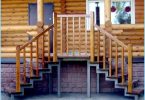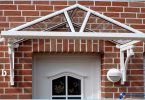Regarding the coating of stairs, one cannot ignore the use of ceramic tiles. This innovative finishing material, including excellent performance in combination with high decorative function. Laying clinker stage has its own characteristics, and as will be discussed further.
Characteristic of ceramic tiles ↑
The production of the finishing material with the prefix «clinker» is a special method of extrusion processing of shale. Thanks to this ceramic tile has all the necessary properties for installation on stage.
Frost ↑
Immunity to moisture (water absorption at the level of 2%) delivers a stable response of ceramic tiles to temperature fluctuations. Seasonal fluctuations are especially dangerous is a null line, when the water is converted to ice and Vice versa. When laying the treads with the use of ceramic material designed to withstand about 300 critical cycles. This is feasible thanks to the capillary structure of the product, which helps to release excess moisture, which is one of the key factors influencing the choice in favor of brick veneer exterior surfaces.
For stairs this is especially true because the area between the risers and the treads exposed to maximum load, and a small detachment could trigger the imminent destruction of the structure. If you lay tile correctly, the risk of peeling and chipping almost no.
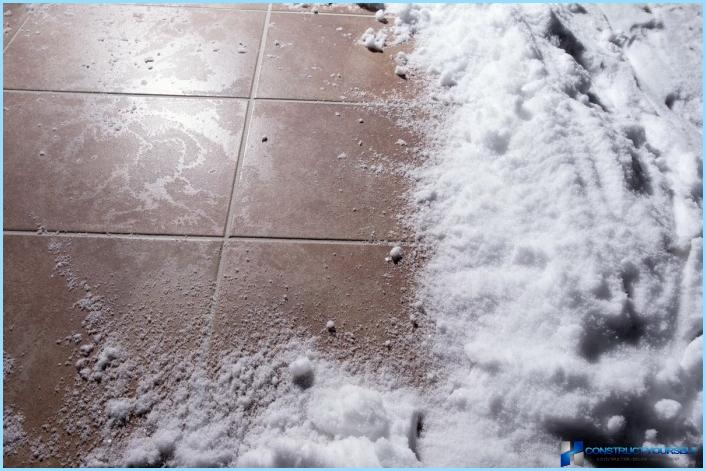
Durability and mechanical strength ↑
Outdoor material used for outdoor decoration, must possess high resistance to wear. For traditional ceramics, these terms are impossible. Intended for laying ceramic tile steps 4 and 5 has a durability class, so the durability of the lining in the technology of work is guaranteed. The level of stability of the mechanical effects depends on the manufacturer:
- German Stoeher coating – the most durable, even if you want to scratch the surface, it will only go sparks.
- Spanish products are less stable, but the cost of them below.
- Worse from Polish producers, which occasionally styling steps offer the usual ceramics is ceramic tiles.
Also important is the increased resistance of the material under load in bending. Selected for installation steps clinker cladding is characterized by indicators 20 MPa. As the load in the operation of more steps it is distributed at the edge of the structure, the value of mechanical strength plays a crucial role.
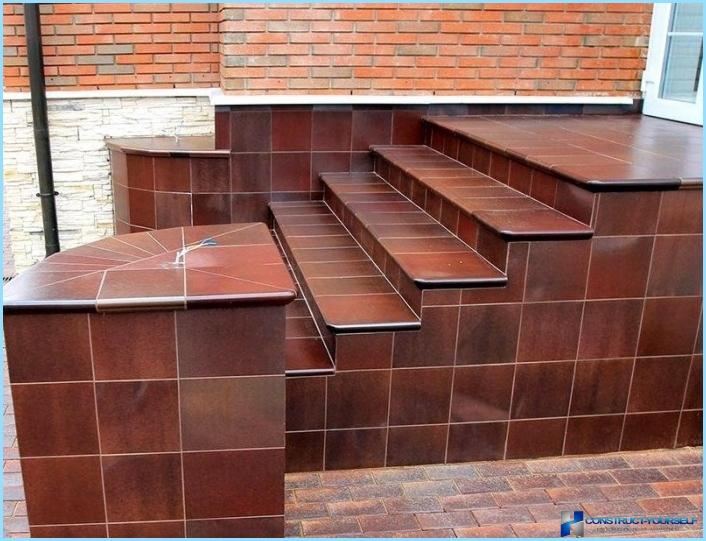
Properties-skid ↑
When laying tiles on the stage, it is necessary to remember about high levels of injury in the operation of the ladder. Therefore, care should be taken about the choice of a non-skid surface material. The standard by which determine the degree of slip products for cladding in Russia does not exist. In addition to visual inspection and their own experiences, consumers may be guided by European standards.
It is worth noting indicators such as grip glue. Advantages of clinker is especially evident when compared with granite. Despite its popularity, the reverse side porcelain stoneware has a smooth texture, so when laying it sticks to the glue is much worse. The structured surface of the mounting base of brick products contributes to the high adhesion with the adhesive. And finally, considering the characteristics of the coating material of clinker, it is necessary to emphasize its ecological safety.
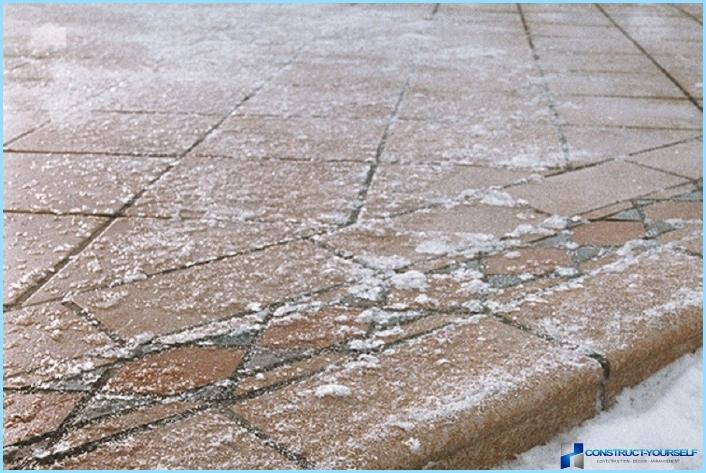
The types of formats ↑
The range of ceramic products for laying of steps in the choice of texture or color palette small. But the exquisite appearance of the stairs provided the perfect structural base and a variety of formats, among which are:
- Levels: ordinary, with a notch, angular, with the Florentine profile.
- Skirting: private, corner, curly, under the stage.
- There are also balconies lining and a profiled skirting with angle.
All parts are manufactured in different variants as touch-tone, and geometric. Therefore, the task of laying tiles stairs even with a complex design becomes feasible. The individual elements of clinker products do not bear a significant functional value, but have a high decorative and allow you to show creative tendencies in the design stages.

The technological process ↑
Technology laying ceramic tiles on steps requires a reliable surface of concrete, stone or brick.
Surface preparation ↑
In view of the rigid base paving products, surface steps under the tiles should not be subjected to deformation by mechanical action, fluctuations of humidity or temperature changes. Therefore, the right to carry out installation only possible on solid Foundation. In first place on the reliability of lead-reinforced concrete. To begin the stacking process can be after the following conditions:
- The surface of the steps to be purged of foreign accretions, dust and dirt, use a drill with a special nozzle or a wire brush.
- All the existing irregularities corrected by using cement-sand mortar.
- Before laying it is necessary to carry out the waterproofing of the surface levels.
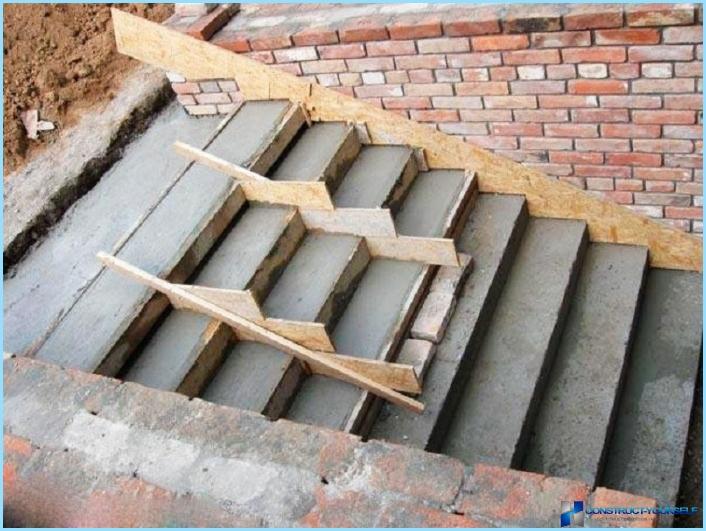
Markings ↑
Technology veneer stair tile contains many facets, including:
- compliance with the horizontal plane;
- the formation of flat seams;
- exposure of the same height of the steps.
The latter condition is not always feasible because of the irregular shape rough design. In this case the author’s job is to visually achieve the same size of steps after laying ceramic tile. When marking, you must strive for the integrity of the slabs by width and length. Trim the edges often looks not aesthetically pleasing, therefore, resort to a slight shortening of the Central elements for ensuring the integrity of the poles. Stage on the street often have side panels, so vertical stacking is inevitable.
They should not be perpendicular to each other. This will prevent the formation of cracks in the areas of the seams.
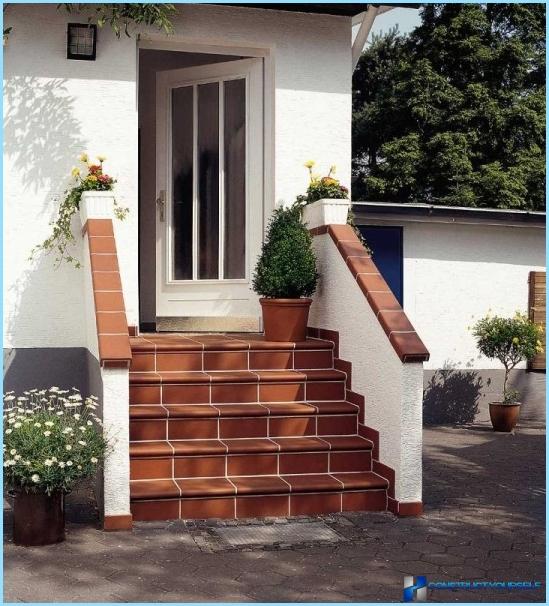
Laying ↑
Before starting the installation, you should decide how the composition will be fixing. In addition to glue, you can use a mortar of cement and sand in the ratio 1:4. For these purposes, selected sand fraction of not more than 7 mm, otherwise the lack of adhesion will cause a risk of detachment of ceramic tiles from the stairs. Greater reliability you’ll be ready a mixture of glue, for this purpose, excellent Ceresit CM12. The offered adhesive is made for clinker products, but suitable for ceramic porcelain tiles. The only exception is marble. Diluted glue in the proportions specified in the manufacturer’s packaging.
The technology of the installation has different options: some tilers start with the top step, the other – from the lower level. Regardless of the method, the process includes the following steps:
- The first stage is a good place to start lighthouse stacking horizontal rows. This would set the plane will determine the thickness of the seams.
- Further stacking of stages is only horizontal tiles.
- After curing the adhesive transferred to the veneer risers.
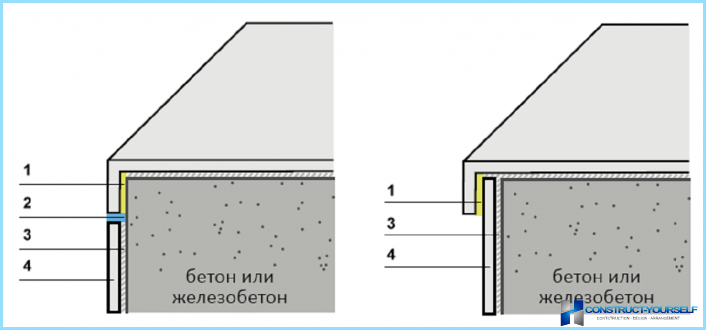
Finishing of stairs, located on the street, involves the use of special frost-resistant glue.
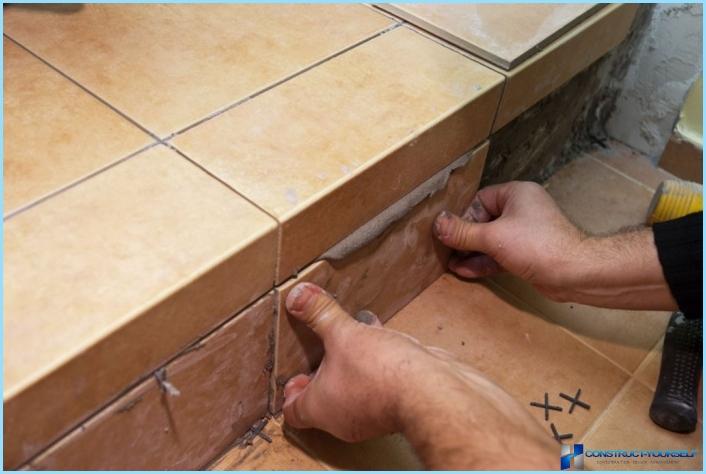
Grout ↑
The width of the joints varies depending on the type of ceramic material. From the point of view of technical characteristics and aesthetic appearance to create the right thickness of 4-5 mm, but size allowed is 10 mm.
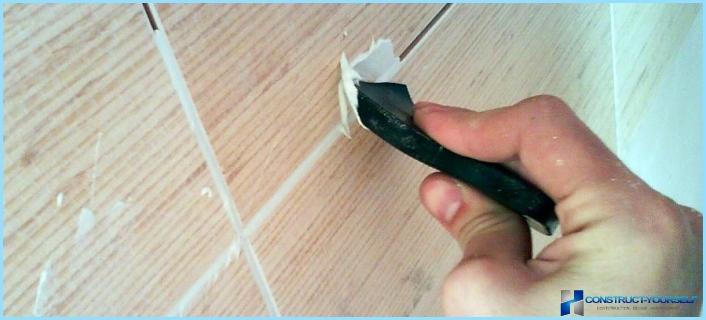
For grout between the gaps of the suture on the steps of the suitable spatula made of rubber or metal. Metal tool should be selected is narrow, respectively, the width of the intervals after laying the tiles. You must work with a semi-dry blend, check the required consistency can be a knot in the palm of your hand – troweling should not crumble.
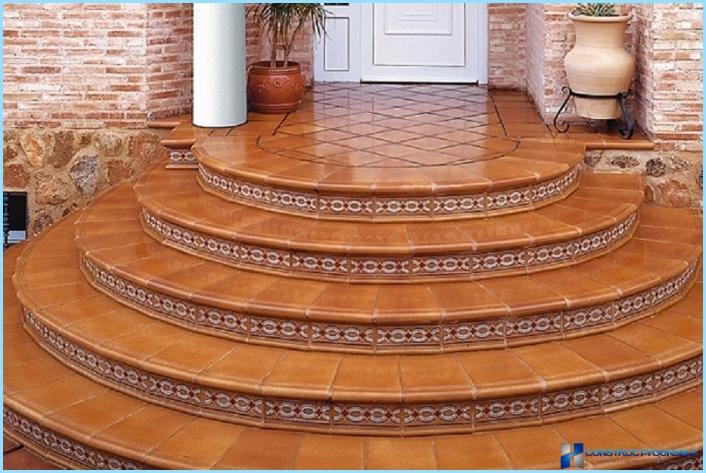
Conclusion ↑
After laying clinker stage need proper care. During the following weeks it is better to cover with plastic or cardboard until dry adhesive. Further operation of the stages will not create unpleasant situations, if the entire laying process took place according to the prescribed technology.

